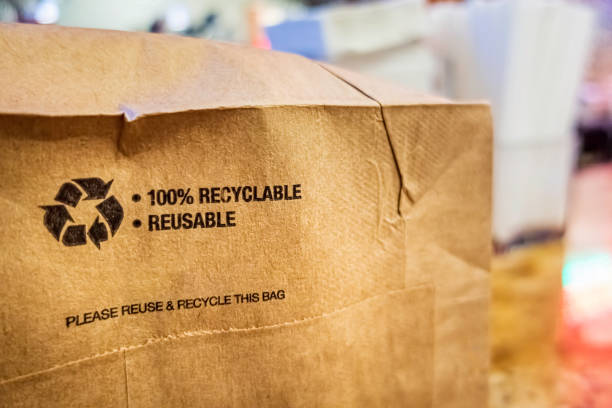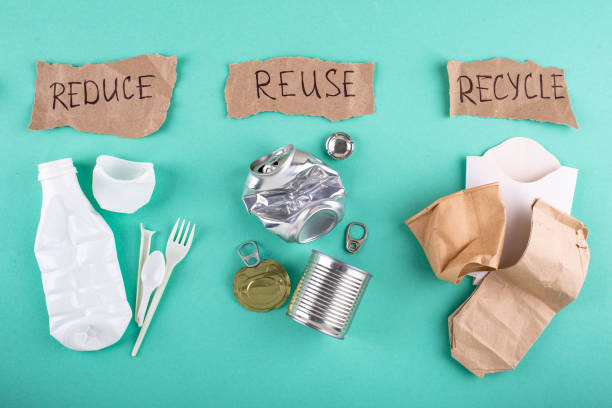In our efforts to work towards a zero-waste planet, we must embrace eco-friendly packaging materials. This is an essential move for brands, whether it’s a startup or a company looking to make a positive impact on the environment.
A report commissioned by the United Nations in 2022 found that 66% of consumers regard environmentally friendly packaging as important when purchasing products. Consumers aged 18 to 44 are more likely to buy products with sustainable packaging, according to a survey of 86% of younger consumers. In addition, about 3/4 of buyers say they would be interested in purchasing products that could be refilled or re-used.
What are Eco-Friendly Packaging Materials?

Eco-friendly packaging materials refer to substances and design concepts focused on reducing environmental harm across the lifecycle of a product.
As online shopping grows, e-commerce packaging is increasing and landfills are filled with more waste. According to Oceana, in 2019, Amazon generated a plastic packaging waste of more than 465 million pounds. It is possible to circle the world 500 times with just air pillows.
In a world struggling with the consequences of excessive waste and pollution, adopting eco-friendly packaging materials has become paramount.
Examples of Eco-Friendly Packaging Materials
1. Recycled paper and cardboard
One of the most widely adopted eco-friendly packaging materials, recycled paper and cardboard offer a sustainable alternative to traditional food packaging. By utilizing post-consumer waste, these materials reduce the demand for virgin fibers, thus conserving natural resources.
2. Biodegradable plastics
Biodegradable plastics, derived from renewable sources such as corn starch or sugarcane, break down naturally over time, minimizing their environmental footprint. However, careful consideration is required in terms of disposal methods to ensure they reach composting facilities rather than end up in landfills.
3. Plant-based alternatives
Plant-based packaging materials, such as those derived from bamboo, sugarcane, or hemp, offer a renewable and biodegradable solution. These materials often boast superior strength and durability compared to traditional plastics, making them an attractive option for various applications.
4. Mushroom packaging
An innovative solution gaining traction in recent years, mushroom packaging utilizes mycelium, the root structure of mushrooms, to create biodegradable packaging materials. These materials are not only compostable but also lightweight and versatile, making them suitable for a wide range of products.
5. Edible packaging
At the forefront of eco-packaging innovation, edible packaging offers a unique solution to waste reduction. Made from edible materials such as seaweed or rice, these packages are not only biodegradable but also provide an additional layer of functionality by serving as a snack or supplement.
6. Biodegradable wraps
You don’t need to buy plastic bubble wrap that won’t break down in landfills to protect fragile goods. Bubble wrap is one of the best packing materials for fragile goods. Wrapping your breakables, filling boxes, or storage containers with eco-conscious products are excellent green solutions.
7. Seaweed
The packaging material is made from dried and shredded seaweed. It is a natural, biodegradable, and recyclable packaging material. You can use it several times before needing replacement. Edible packaging solutions are being explored by innovative companies.
Compared to traditional packaging materials, seaweed packaging has several advantages. There is no odor and no chemical leaching into the food that it surrounds, and it is non-toxic. In addition to being flexible and strong, seaweed packaging can be used to wrap delicate items with ease.
5 Top Benefits of Eco-Friendly Packaging Materials

1. Reduced carbon footprint
By opting for eco-friendly packaging materials and practices, companies can significantly reduce their carbon footprint. From sourcing sustainable materials to minimizing transportation emissions, every aspect of eco-packaging contributes to mitigating climate change.
2. Positive brand image
More and more consumers today are concerned about the environmental impact of their purchases. Approximately 66% of consumers want to reduce plastic packaging waste, according to a Nielson study.
Your sales could increase as a result of switching to eco-friendly packaging, as environmentally conscious consumers will be interested in your products. A business could also appear more responsible and conscientious when it uses eco-friendly packaging.
3. Long-term savings
Small businesses may have to pay more for eco-friendly packaging at first, but they can save money over time by using them. Besides being reusable or recyclable, eco-friendly packaging materials will save you money because you won’t have to buy new packaging all the time.
Recycling programs are available in many cities and towns. In other words, you can make money by recycling eco-friendly packaging that is made of recyclable materials.
4. Conservation of resources
Eco-packaging prioritizes the efficient use of resources, whether through recycling materials or utilizing renewable alternatives. By closing the loop on resource consumption, businesses can help conserve natural habitats and reduce the strain on ecosystems.
5. Minimal environmental impact
Traditional packaging materials often contribute to pollution and habitat destruction throughout their lifecycle. In contrast, eco-packaging materials are designed to minimize environmental impact, from production to disposal, ensuring a more sustainable future for generations to come.
Challenges and Limitations of Eco-Friendly Packaging Materials

1. Cost considerations
While eco-friendly packaging materials offer long-term benefits, initial costs can be higher compared to conventional packaging materials. Businesses must weigh the economic implications of sustainable packaging solutions and consider the potential return on investment in terms of brand value and market competitiveness.
2. Limited availability of sustainable materials
Despite growing demand, sustainable packaging materials may not always be readily available or cost-effective for all industries. Manufacturers and suppliers must work together to scale production and make eco-friendly alternatives more accessible to businesses of all sizes.
3. Durability and shelf life
Some eco-packaging materials may have limitations in terms of durability and shelf life compared to traditional plastics. Balancing sustainability with product protection and preservation remains a key challenge for packaging engineers and designers.
4. Regulatory compliance
Navigating the complex landscape of regulations and standards for eco-packaging can pose challenges for businesses. From labeling requirements to certification processes, compliance with local and international regulations is essential to avoid legal issues and maintain consumer trust.
Innovative Solutions and Technologies for Eco-Friendly Packaging Materials

- Smart packaging
The integration of smart technologies such as RFID tags and QR codes enables enhanced tracking and tracing of products throughout the supply chain. Smart packaging not only improves efficiency and transparency but also facilitates recycling and waste management efforts.
- Nano-packaging
Advancements in nanotechnology have led to the development of nano-scale materials with unique properties for packaging applications. Nano-packaging offers improved barrier properties, antimicrobial properties, and enhanced shelf life, contributing to food safety and sustainability.
- 3D printing
Additive manufacturing techniques, such as 3D printing, offer unprecedented flexibility and customization in packaging design. By optimizing material usage and reducing waste, 3D printing holds the potential to revolutionize eco-packaging production processes.
- Blockchain for traceability
Blockchain technology provides a decentralized and transparent platform for tracking the journey of products from source to shelf. By leveraging blockchain for supply chain traceability, companies can ensure the integrity of eco-packaging materials and verify their sustainability claims.
Successful Implementation of Eco-Friendly Packaging Materials: Case Studies

- Patagonia
Outdoor apparel company Patagonia has long been committed to environmental sustainability, including its packaging practices. By utilizing recycled materials and minimizing packaging waste, Patagonia demonstrates a holistic approach to eco-friendly business operations.
- Lush Cosmetics
Lush Cosmetics is renowned for its innovative and environmentally friendly packaging solutions, such as its naked packaging concept and reusable containers. Through initiatives like the Lush Green Hub, the company encourages customers to return packaging for recycling or refilling, reducing waste and promoting circular economy principles.
- Seventh Generation
Seventh Generation, a leading brand of household and personal care products, prioritizes sustainable packaging design and materials. From plant-based plastics to post-consumer recycled materials, Seventh Generation demonstrates its commitment to reducing environmental impact throughout its product lifecycle.
- Method Home
Method Home, a pioneer in eco-friendly cleaning products, showcases creative packaging solutions that combine sustainability with aesthetics. By using minimalist designs and refillable containers, Method Home encourages consumers to embrace sustainable living without compromising on style or convenience.
Future Trends in Eco-Friendly Packaging Materials
1. Circular economy models
The transition towards a circular economy, where resources are reused and recycled indefinitely, represents the future of sustainable packaging. By designing products and packaging with end-of-life considerations in mind, businesses can minimize waste and maximize resource efficiency.
2. Integration of IoT and AI
The integration of Internet of Things (IoT) devices and artificial intelligence (AI) algorithms enables real-time monitoring and optimization of packaging processes. From smart sensors to predictive analytics, these technologies offer insights that drive efficiency and sustainability across the supply chain.
3. Customization and personalization
Advancements in digital printing and packaging technologies enable mass customization and personalization of packaging designs. By tailoring packaging solutions to individual preferences and requirements, businesses can enhance consumer engagement and reduce waste.
4. Zero-waste packaging solutions
The concept of zero-waste packaging aims to eliminate waste throughout the entire packaging lifecycle, from design to disposal. By embracing innovative materials and circular design principles, businesses can minimize environmental impact and contribute to a more sustainable future.
Conclusion
Eco-friendly packaging materials play a crucial role in reducing waste and environmental impact across various industries. By embracing sustainable materials, innovative technologies, and consumer engagement strategies, businesses can pave the way for a more sustainable future.
As consumers become increasingly conscious of the environmental consequences of their purchasing decisions, the demand for eco-friendly packaging solutions will continue to grow. Businesses must prioritize sustainability and work towards implementing effective eco-packaging practices that benefit both the planet and future generations.
FAQs
Which is the most eco-friendly packaging material?
There are many environmentally friendly packaging materials available, such as those that are biodegradable, compostable, and sustainable. In addition to mushrooms, cornstarch, and cellulose, other options are available as well.
What can I do to make my packaging eco-friendly?
When possible, choose recycled post-consumer packaging. Biodegradable and sustainable packaging is a bonus. To ensure that your items remain safe in transit, use sustainable bubble wrap options, or repurpose other packaging materials.
Why are eco-friendly packaging materials important?
To break down plastic, a very long time is required. Therefore, eco-friendly packaging is extremely important. We are leaving behind a lot of stuff in our landfills that will last for many years to come. Every decision you make, including how you package and ship your products, must be considered from an environmental standpoint.
How expensive are eco-friendly packaging materials?
Compared to traditional packaging, eco-friendly packaging materials are more expensive. Several factors influence price, including material and order quantity. Bulk purchases of eco-friendly packaging can save you money. Your brand image will be positively influenced by the extra costs, so it’s often worth it.







